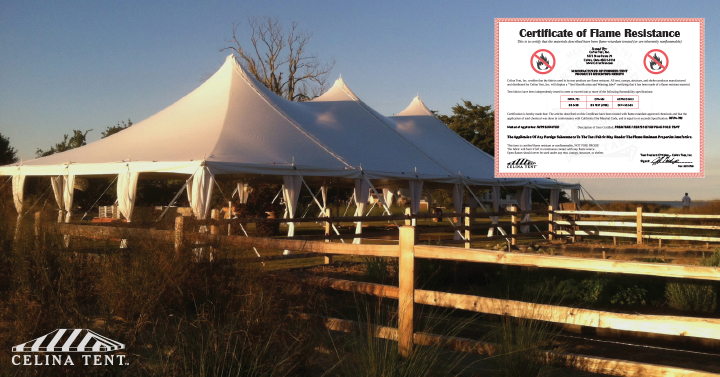Flame Certificates for Tents How They are Given

The Burning Question: Is Your Tent Flame Resistant?
We’re discussed a few times over what a tent’s flame certificate means, and why it is so important to have one when deciding what tents to buy. Feel like digging a little deeper? I certainly do - Join me!
What the Resistance Is
You’ll notice if you go back and read through our past articles on the topic, no where do we claim that fabrics – any fabrics – are “fire proof.” This is a very hard aspect to imbue items with. What we are most concerned with is “fire resistance.” To be resistant to fire, a fabric must be tested to various standards, which include how long it stays on fire once lit, how far it spreads, and how much of it turns to ash in a set period of time. Again, this doesn’t mean that the fabric will not catch fire if an ignition source is applied.
The ‘resistance’ portion comes from what happens to the fabric once this ignition source (be it a campfire, lighter, heating coils on a heater) is removed. In most cases, good fire-resistant fabrics should:
- Stop Burning
Without the constant source of fire, the fabric should stop burning on its own. This is achieved when chemicals in the material stop any fuel source from catching fire on its own. Finding and removing the ignition source should, in this case, stop the fire.
- Have Minimal Burn Spread
This would indicate that the material is stopping the individual fibers from catching and maintaining burn on their own; an extension of the “stop burning” mechanic. Obviously, if it can’t be fuel on its own no additional flames will start.
- Not Create Lots of Ash
The more fabric there is remaining, the less of the actual material has been burned up by the ignition source. This not only indicates the necessary level of burn resistance, but reduces end-product waste from the burn as well.
A Measurement of Resistance
It’s easiest to measure the flame resistance of a material by subjecting it to standardized tests that grades each attribute on a pass-fail. When Celina chooses materials, we make sure that they have all passed a base set of tests laid out by NFPA 701 and CPAI 84, two separate testing parameters for fabrics used in shelters and recreational tents. Whether we send the material to a separate testing lab or use our in-house testing facility and the official testing procedure, Celina makes certain that all of our materials for tent tops and shelters.
Contact us via phone (866-783-4083) or email (sales@gettent.com) if you have any questions on our flame certification – much of which can be found online at the online Knowledge Center’s Flame Certificates page at www.GetTent.com.
